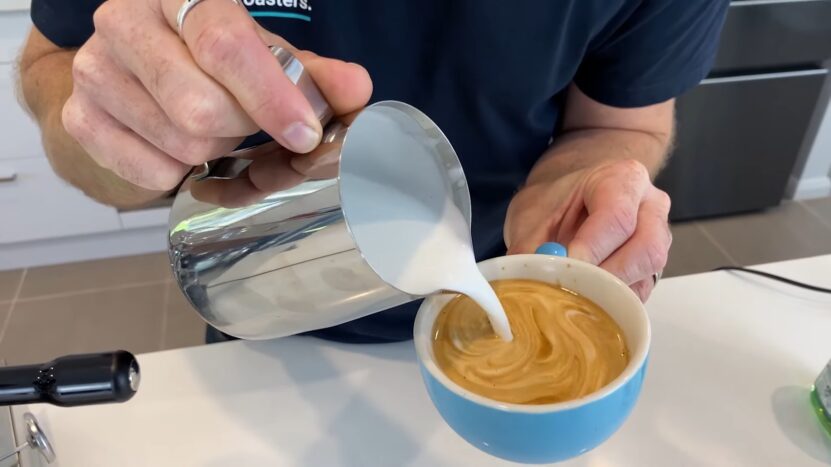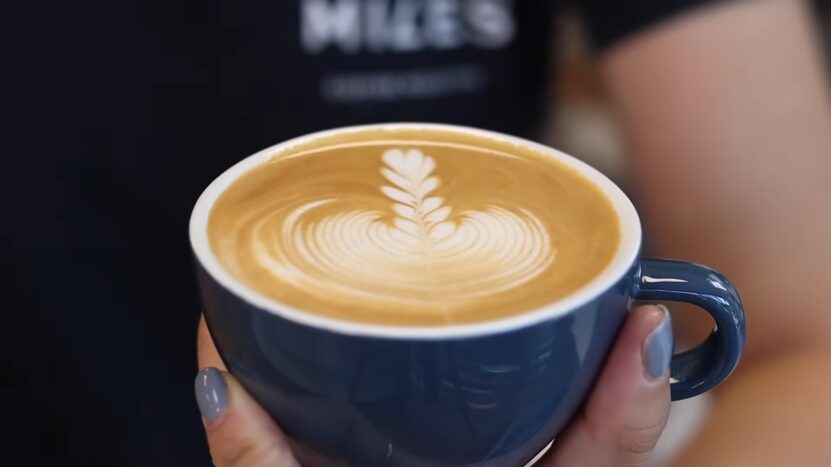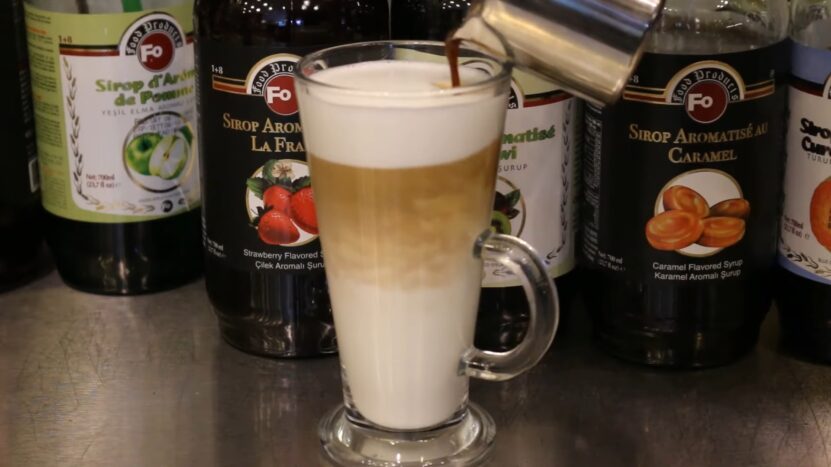Coffee is more than just a beverage; it’s a culture, a ritual, and for many, an essential part of daily life. Among the myriad of coffee drinks available, two stand out for their popularity and similarity: the cappuccino and the caffe latte.
But what sets them apart? Let’s explore the world of these creamy concoctions and uncover the real differences.
Coffee aficionados and baristas worldwide have debated the nuances between a cappuccino and a caffe latte. While both drinks have Italian origins and are made with espresso and milk, the distinctions lie in the preparation, texture, and presentation.
This article will guide you through the intricate details of each drink, ensuring that the next time you step into a café, you’ll order with confidence.
Historical Origins
The cappuccino, named after the Capuchin monks due to its resemblance to their brown robes, has its roots in Italy. In the early 20th century, as espresso machines became more prevalent, Italians began adding steamed milk to their coffee, giving birth to what we now know as the cappuccino.
- Espresso Evolution: The development of espresso machines in the early 1900s revolutionized coffee consumption in Italy.
- Monk’s Influence: The Capuchin monks, known for their distinct brown robes, inadvertently lent their name to this beloved drink.
The Birth of Caffe Latte
Caffe latte, which translates to “milk coffee,” has a more straightforward origin. Traditionally, Italian families would start their day with a big cup of milky coffee, which was less concentrated than espresso. Over time, this practice evolved into the caffe latte we recognize today.
- Morning Ritual: In many Italian homes, the day began with a combination of coffee and hot milk, setting the stage for the caffe latte’s inception.
- Global Popularity: As Italian immigrants traveled, they introduced the caffe latte to different cultures, leading to its widespread popularity.
Composition & Texture

A classic cappuccino is a harmonious blend of equal parts espresso, steamed milk, and frothed milk. The froth on top is dense and velvety, creating a luxurious mouthfeel. This thick layer of foam insulates the drink, keeping it warmer for longer.
- Balanced Proportions: The 1:1:1 ratio of espresso, steamed milk, and froth is what gives the cappuccino its unique texture and taste.
- Art of Frothing: Achieving the perfect froth requires skill. The milk should be frothed until it’s velvety, not bubbly.
Latte’s Smooth Consistency
A caffe latte, on the other hand, has more steamed milk and a light layer of foam on top. The result is a creamier, smoother drink where the espresso’s flavor is more diluted. It’s this high milk-to-espresso ratio that makes lattes a favorite among those who prefer milder coffee drinks.
- Milk Dominance: The caffe latte’s character is defined by its abundant steamed milk, which gives it a creamy texture.
- Subtle Espresso Notes: With more milk, the espresso’s intensity is toned down, resulting in a gentler flavor profile.
Presentation & Serving Size

Cappuccinos are typically served in smaller, 6-ounce cups. This size ensures that the drink remains hot and that the flavors are concentrated. The thick foam on top often becomes a canvas for baristas, who craft beautiful latte art, adding a visual treat to the experience.
- Heat Retention: The smaller serving size and thick foam layer work together to keep the cappuccino hot.
- Latte Art: From hearts to rosettes, the cappuccino’s foam is perfect for showcasing a barista’s artistic skills.
Caffe Latte’s Larger Serving
In contrast, a caffe latte is usually served in larger, 8 to 12-ounce cups. The increased volume accommodates the extra milk, and the light foam on top is often garnished with a sprinkle of cocoa or cinnamon. The larger size makes it a popular choice for those looking for a longer-lasting coffee experience.
- Extended Enjoyment: The caffe latte’s larger size means you can savor it over a more extended period.
- Garnish Galore: While latte art is possible, many baristas choose to garnish lattes with spices, adding an extra layer of flavor.
Cultural Impact & Popularity
The cappuccino, with its rich history and balanced composition, has become a staple in coffee shops worldwide. Its global appeal can be attributed to its perfect harmony of flavors and textures. Many cultures have embraced the cappuccino, adding their unique twists, from the addition of spices in India to sweet syrups in America.
- Universal Love: From Europe to Asia, the cappuccino has found fans in every corner of the world.
- Local Twists: Different regions have infused the classic cappuccino with local flavors, creating a myriad of delightful variations.
Latte’s Versatility
The caffe latte’s milder flavor and larger serving size have made it a favorite among those new to coffee. Its versatility has led to the creation of numerous flavored lattes, from the pumpkin spice latte craze in the US to matcha lattes in Japan.
- Flavor Adventures: The caffe latte’s mild base makes it an excellent canvas for a variety of flavors, from sweet to spicy.
- Coffee Gateway: For many, the caffe latte serves as an introduction to the broader world of coffee, thanks to its approachable taste.
Variations & Adaptations

While the traditional cappuccino remains beloved, several variations have emerged over the years. The “dry cappuccino,” for instance, has more foam and less milk, while the “wet cappuccino” has the opposite composition. Some regions even serve iced cappuccinos during warmer months.
- Tweaking Textures: By adjusting the milk-to-foam ratio, baristas can create a range of cappuccino experiences.
- Seasonal Delights: Iced cappuccinos and other seasonal adaptations ensure this drink remains a favorite year-round.
Caffe Latte Innovations
The caffe latte’s adaptability has given rise to a plethora of variations. There’s the “flat white,” which originated in Australia and features microfoam, and the “latte macchiato,” where steamed milk is “stained” with a shot of espresso. Additionally, alternative milk options like almonds, soy, and oats have expanded the latte’s reach.
- Global Creations: Each region has contributed to the caffe latte’s evolution, from the flat white to the cortado.
- Milk Magic: With the rise of dairy alternatives, the caffe latte continues to evolve, catering to diverse dietary preferences.
Crafting the Perfect Cup
Crafting the perfect cappuccino requires precision and skill. The espresso shot must be robust and flavorful, the milk steamed to just the right temperature, and the foam dense and velvety. Many baristas undergo extensive training to master the art of the cappuccino, ensuring every cup is a masterpiece.
- Espresso Excellence: The foundation of a great cappuccino lies in a well-pulled espresso shot.
- Milk Mastery: Achieving the perfect milk texture is crucial, with the aim being a creamy, velvety finish.
Caffe Latte’s Technique
While the caffe latte might seem simpler to craft, it too requires expertise. The espresso must blend seamlessly with the steamed milk, and the light foam on top should be consistent. As with the cappuccino, the key lies in understanding the nuances of each ingredient and the equipment used.
- Blend & Balance: The caffe latte’s beauty lies in its harmonious blend of espresso and milk.
- Foam Finale: A consistent, light foam crowns the caffe latte, adding the finishing touch to this beloved beverage.
FAQ
1. What is the origin of the term “cappuccino”?
The term “cappuccino” is derived from the Capuchin friars, a religious order known for their distinctive brown robes. The drink’s name comes from the similarity in color between the brown robes and the coffee with milk and foam.
2. How do you properly froth milk for a cappuccino or latte?
Frothing milk involves using steam to create microfoam, which is crucial for both cappuccinos and lattes. The milk should be steamed to a temperature of around 150-155°F (65-68°C), with the goal of achieving velvety, creamy foam without large bubbles.
3. Can I make a cappuccino or latte without an espresso machine?
Yes, it’s possible to create cappuccinos and lattes without an espresso machine. You can use alternative methods like a stovetop Moka pot or an AeroPress to make concentrated coffee, and then froth milk separately using a handheld frother or a French press. While the results might differ slightly, you can still enjoy similar flavors and textures.
4. Are there any health benefits to choosing a cappuccino or latte?
Both cappuccinos and lattes can be part of a balanced diet when consumed in moderation. They offer the benefits of antioxidants from coffee and the nutritional value of milk. However, keep in mind that adding syrups, sweeteners, or excessive amounts of milk can increase calorie and sugar content.
5. What’s the difference between a “flat white” and a latte?
A flat white is similar to a latte, but it’s typically made with a higher ratio of coffee to milk and features microfoam rather than a layer of light foam. This results in a stronger coffee flavor and a creamier texture. The flat white originated in Australia and New Zealand.
6. Can I enjoy a cappuccino or latte if I’m lactose intolerant or dairy-free?
Absolutely! Many cafes now offer alternative milk options like almond, soy, oat, or coconut milk. You can substitute these options in your cappuccino or latte to create dairy-free versions that cater to your dietary preferences.
Final Words
In conclusion, both the cappuccino and the caffe latte hold esteemed places in the world of coffee. While they share common ingredients, their unique preparation methods, textures, and presentations set them apart. Whether you’re drawn to the rich, velvety layers of a cappuccino or the smooth, creamy consistency of a latte, there’s no denying the artistry and tradition embedded in each sip.
As you explore the world of coffee, remember that each brew has a rich history and cultural influence. When in a café, pause to savor the craftsmanship and flavors that coffee enthusiasts have cherished for generations.
Cheers to the enduring appeal of coffee! And don’t forget to pair it with some delicious food.
